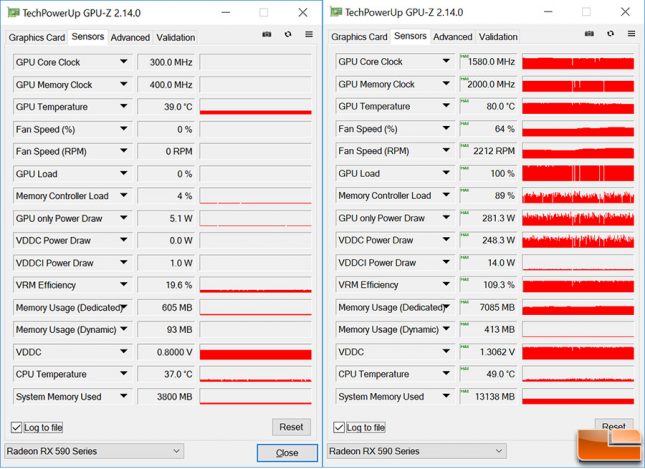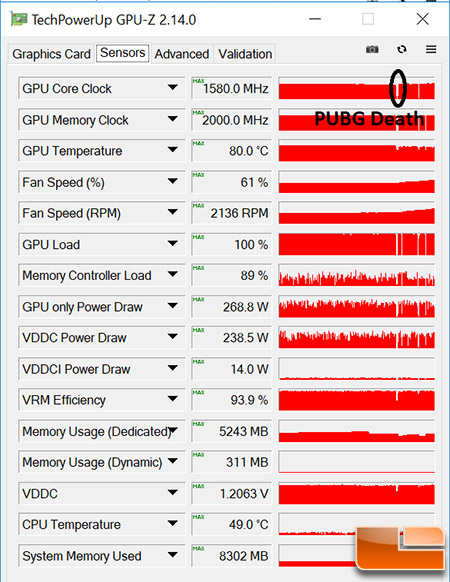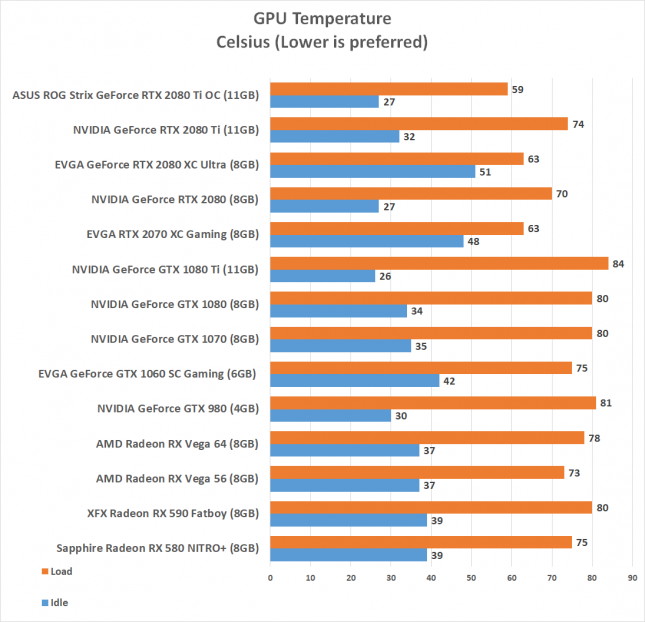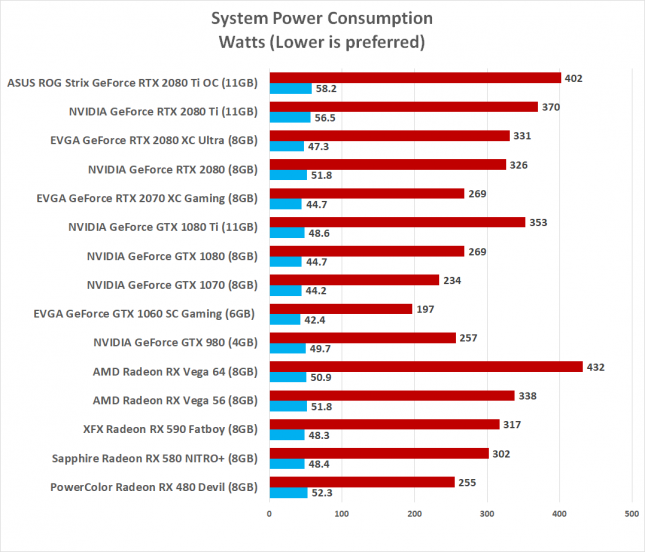XFX Radeon RX 590 Fatboy Video Card Review
Temperature & Power Consumption
The gaming performance on a graphics card is the most important factor in buying a card, but you also need to be concerned about the noise, temperature and power consumption numbers.
XFX Radeon RX 590 Fatboy Temperatures:
At idle none of the fans on the XFX Radeon RX 590 Fatboy graphics cards are running and the GPU temperature was 39C in a room with an ambient temperature of 70F. When playing PUBG for over an hour we noticed that temperatures hit 80C and they card was usually in the 75-80C range while gaming.
We did notice a very strange fan characteristic when playing PUBG. When we perished in PUBG we noticed that the fans of the Radeon RX 590 would spin up and be really loud. We ran the game in both full screen and windowed mode and the anomaly remained. We changed from our Acer Predator X27 4K 144Hz HDR G-Sync gaming monitor to the ASUS MG279 FreeSync gaming monitor and the issue remained. We did a fresh install of Windows 10 Pro v1803 and the issue still remained. AMD suggested that they send out another card to try out and we got our hands on the PowerColor Radeon RX 590 Devil and it did the same thing. The fans go from 56% (1850RPM) while gaming and when you die in PUBG or go to the main menu it would spin up to 78% (2500RPM) for no apparent reason. If you buy one of these cards and run into a similar fan issue be sure to let us know by commenting in the section below as AMD is unable to replicate the issue.
Power Consumption
For testing power consumption, we took our test system and plugged it into a Kill-A-Watt power meter. For idle numbers, we allowed the system to idle on the desktop for 15 minutes and took the reading. For load numbers we ran Rainbow Six Siege at 1440P and recorded the peak power number while the in-game benchmark was running. This is done to ensure the results are repeatable.
Power Consumption Results: The XFX Radeon RX 590 Fatboy used around 48 Watts of power at idle and topped out at 317 Watts on our load test. This is about 120 Watts more than a GeForce 1060 6GB and 90 Watts more than a GeForce GTX 1070. This card might be built on the 12nm process, but it’s still using the Polaris architecture and is still power hungry.




